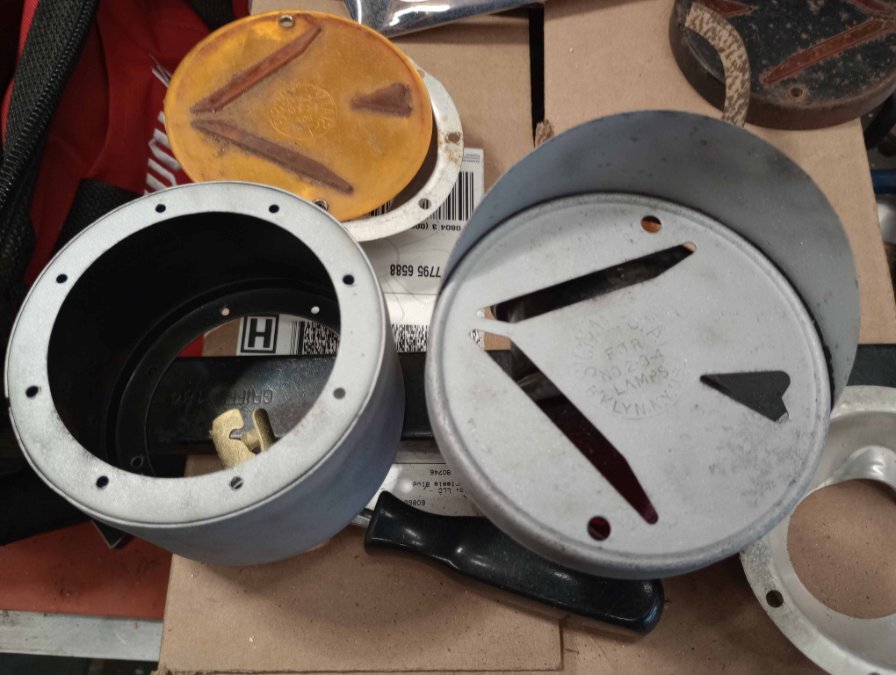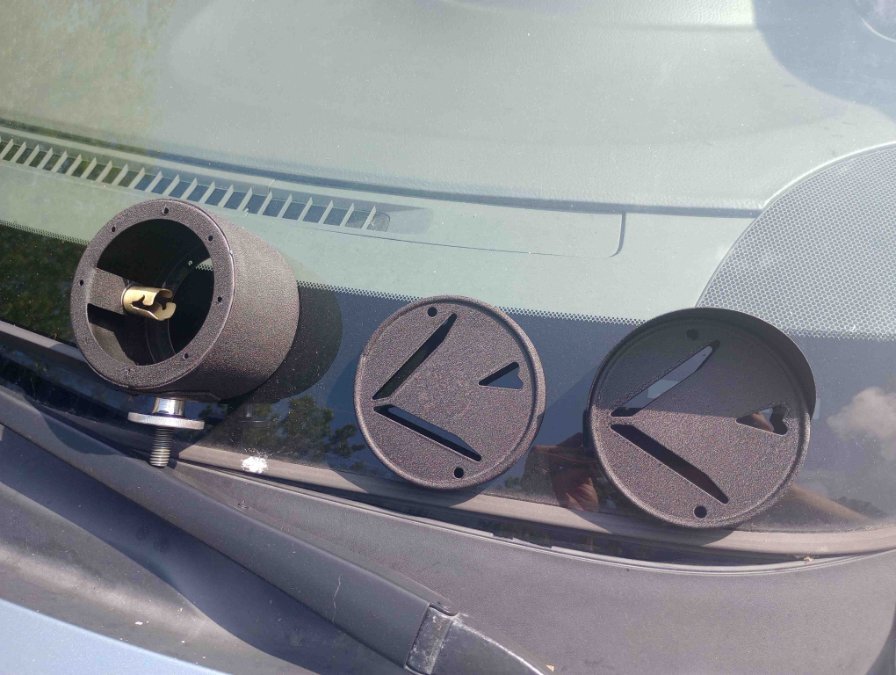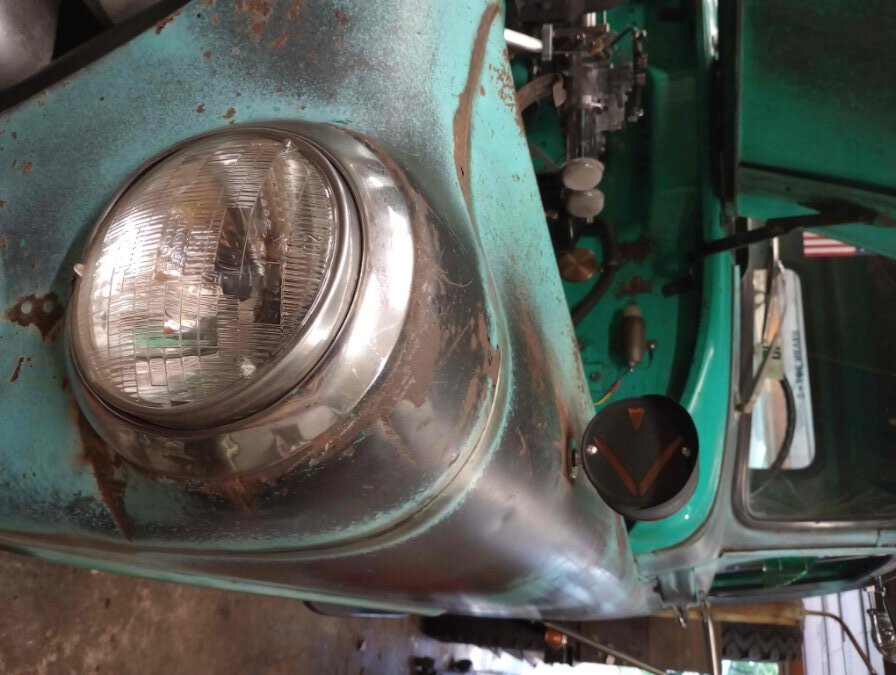-
Posts
218 -
Joined
-
Last visited
-
Days Won
1
rustyzman last won the day on October 20 2024
rustyzman had the most liked content!
Reputation
25 ExcellentProfile Information
-
My Project Cars
54 stake bed
Converted
-
Location
Chicagoland, Where Rust is King - 54 Dodge C1D Stake bed
-
Interests
Fabrication and Restoration of all things mechanical and electronic
Contact Methods
-
Occupation
World Class ASE Master Auto/Truck Technician, Machinist
Recent Profile Visitors
The recent visitors block is disabled and is not being shown to other users.
-
My '54 headlight switch operated the same way originally. Front running lights turned off when the headlights turned on. I have since rewired it all and they all come on in the headlight position now. Interesting but odd functionality that they had originally.
-
Congrats on making the purchase! That truck looks very good from the pictures and that alone will put you ahead of the game. My '54 C1D was in very poor shape when I bought it, with issues in absolutely every system ranging from inconvenient to pretty devastating. Plus it is a 1 ton, so many parts are harder to source. Even with that, I have gone through all the mechanicals and located most everything I needed, even if some took a bit of time to find. Good news is that a whole lot of parts can be had, especially for a 1/2 ton. Engine mechanicals are all available. Brakes are available (minus drums, maybe? not sure) Wheels and tires are much easier for that one. Glass is available. Wearing components for the suspension and steering are available. Bed kits are available. Driveline parts are available. None of it is as easy as buying parts for a ford or a chevy, but these are much more unique and rare, at least around here. Looks like you will have a great base to start with and a really nice truck to have fun with. Good Choice.
-
Nice! We had that ATLAS or a very similar model at one of the service stations I was a tech at. It was a good unit for it's day. You can get an idea of if the combustion process is too rich or too lean by reading the firing line and the spark line shape on the scope, but without a probe, you won't be able to easily see the change point from too rich to too lean as you adjust. Need to see CO and HC, and watch where they diverge to get stoic ratio correct. A wideband O2 sensor in a welded bung in the exhaust up front and an air/fuel ratio sensor will really get you much closer. I would still use that to get the basic tune-up settings right if I had it.
-

And I thought I've seen all the wacky vintage car accessories...
rustyzman replied to Pep48's topic in P15-D24 Forum
I'm a big pocket watch fan. I would absolutely dedicate one of mine to a vehicle. I have also seen that accessory once before, not too long ago. Judging by the illustration of the steering wheel, that one was meant for very early cars, though the phillips screw brings the manufacture date to a bit later... Interesting... Super cool. -
Mcmaster Carr has several versions of zerks for unthreaded holes if needed. I have no doubt they will ship anywhere too. Might make more sense to do what Sniper suggested and thread it instead for a more common one instead. Normal locking style https://www.mcmaster.com/products/zerk-grease-fittings/grease-fittings-for-unthreaded-holes-6/ Flush style for use with a grease needle https://www.mcmaster.com/products/zerk-grease-fittings/flush-style-grease-fittings-for-unthreaded-holes/
-

License plate bracket - is it bent?
rustyzman replied to bkahler's topic in Mopar Flathead Truck Forum
You know, now that I look at a few other pictures, I might have that wrong. It looks like some pics show it mounting the other way, jogged toward the front. Sorry, not being much help on this one... -

License plate bracket - is it bent?
rustyzman replied to bkahler's topic in Mopar Flathead Truck Forum
Could be wrong, but I think that is correct. I have not had my original one in my hands in a long time. As I recall, it mounts with the taillight bolts and jogs the plate to the reat, under the clear lens on the bottom of the taillight. -
My '54 has a knockout stamped on the front face under the grille that you can punch out and setup for a crank. Has the crank nut on the crankshaft as well.
-
Nice!
-
Nice. Put up some pics when you get them and as you restore them!
-

Any info you can give would be appreciated!!
rustyzman replied to Rhino71's topic in Mopar Flathead Truck Forum
That is a great looking truck in excellent condition! For my 1 ton, the rear shoes took about 5 years to find in the wild on ebay. I have the oddball Timken style they only used for about 2 years on the rear. Fronts were just Lockheed and readily available. I have since obtained extra linings for front and rear and will rivet them on the old shoe cores once I get time, so I have spares. Rear wheel cylinders were an odd bore size too and all modern catalog listings are incorrect for my year. Had to go to Kanter for those, but they had what I needed. Biggest issue that I found was no availability of replacement drums at all. I have snagged a few used ones, but condition is a bit questionable. Better than nothing at all though. If you can, a dual circuit master cylinder would be wise. I am assuming it still has a single pot unit. I found a '75 Chevy 1 ton unit that has the correct bore size but had to make an adapter and new pushrod to get it to work. Certainly feel better about the dual circuit though. Love that relining station there Dodgeb4ya. I have a STAR relining unit in my watch list on ebay that I have no business buying, but man I want it! -
rustyzman started following Throttle? and turn signals
-
In case you want some ideas, here is a couple shots of the restoration of the Signal-Stat arrow lights I did. Nice link there ggdad1951. That is a good selection.
-
Nice work! A beast to say the least. We are all spoiled with these aluminum cased transmissions now. The cast iron 4 speed and 5 speed truck transmissions are more than a minor challenge.
-
I absolutely love vintage truck lighting. True, these vehicles did not come with turn signals installed. They were not required by law at that time for Trucks and got added on afterwards as the laws changed. The older ones only had one taillight on the left hand side and no reverse lights. Parking lights also turned off when the headlights were on. I just recently restored a pair of very old arrow style, double sided lights with visors on the front facing lenses, for my fenders. Previously I had a NOS pair of Peterson amber/red double sided ones that I moved to the old RV instead. I've wanted a pair of these arrow lights for a long time. There are many options for double sided turn signal lights. New stuff: https://petersonlightsandharnesses.com/ https://www.truck-lite.com/ Old stuff: Peterson, DO-RAY, Signal Stat and KD are just a few of the popular old makers of lights. Usually, they have an amber light to the front and a red light to the rear. Farm Tractors used them all the time. I have bought many NOS lights at very good prices over the years. You just have to be patient and search for them. Ebay and swap meets are the best I have found. Hand throttles are also very useful if you have a PTO on your trans. RPM up for the load of whatever you are running off the PTO when it is engaged.
-
Is that the 11" clutch? Looks identical to mine too.




.jpg.6691a645cb4d1f7667233755a25d8d77.jpg)
.jpg.ab459a6b2eeb66532784dbe1547ae382.jpg)


